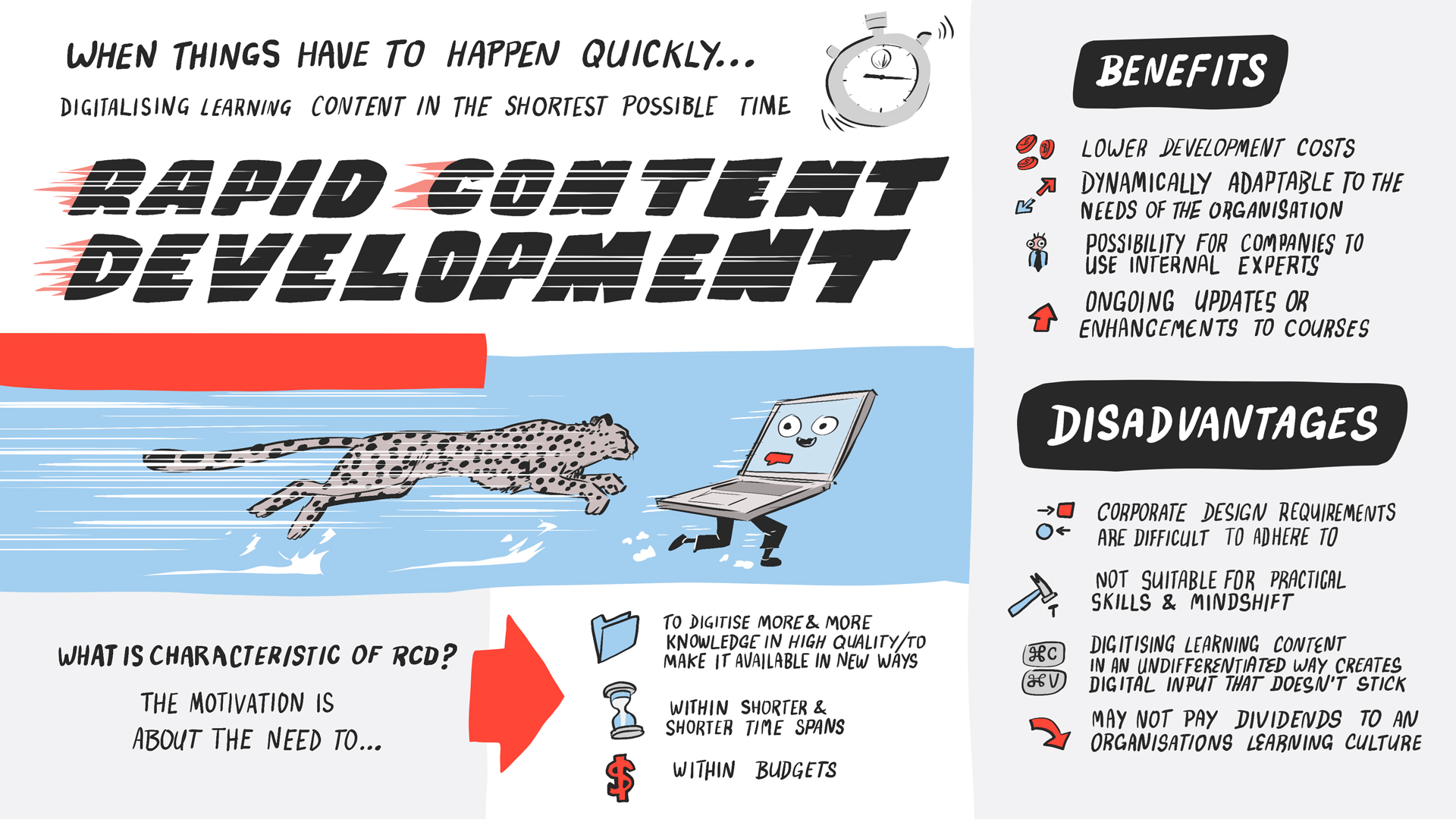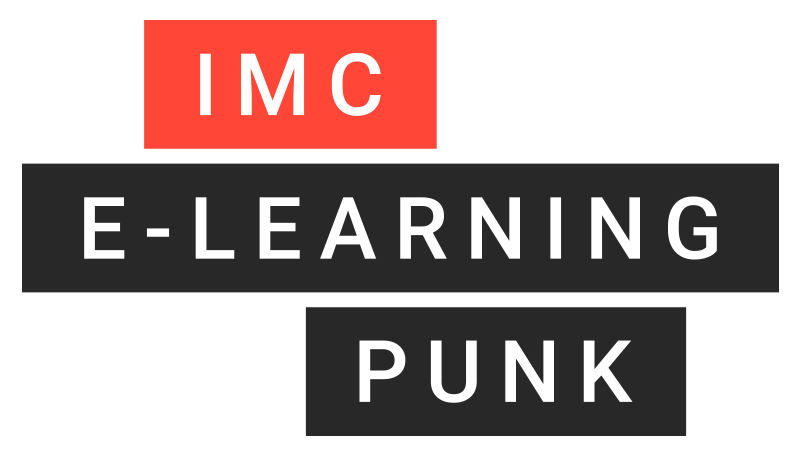
Rapid Content Development: Creating E-Learning Trainings Quickly
Why fast creating digital trainings is possible but risky
... and suddenly, the training had to be scrapped. Many companies made that experience in lockdown number one. Employees needed to be trained, but the training was postponed due to Corona. Again. And again. However, most types of training simply cannot be endlessly postponed or even be cancelled altogether.
A pragmatic and swift solution is needed – training needs go where the employees are: their home office. For many companies, that means digitising learning content, and doing so quickly. They need rapid content development. This trend was already apparent before Corona, but the pandemic greatly increased the demand for the technologies that facilitate rapid content development.
This article explores what qualifies as rapid content development, what type of learning content is suitable for rapid digitisation, and what risks a strong focus on speed entails.
INFO
Definition: Rapid content development (RCD) is an agile model for teaching system design, comprising a preparation phase, an iterative design, template-based re-usable components and e-learning tools for quick and cost-efficient provision.
Speedy please – but without quality loss
We want things now: fast food, coffee to go, messenger services, online shopping … we no longer have time. Companies have also clocked onto this trend, and want to stay up to date with their training courses. An ever-increasing amount of knowledge is expected to be available almost instantly on various media while maintaining a high quality standard and staying within budget.
The solution: rapid content development. But wait a minute! No matter how fast you go, the quality of the overall learning solution must not be compromised. That’s why learning experts like Eva Lettenbauer always look at the big picture.

Eva Lettenbauer, Specialist Learning Experience Design at imc
Hi Eva, thanks for “quickly” making time for us. How did you experience the rapid content development hype last year?
Especially at the beginning of the pandemic, many companies were facing the challenge of having to digitalise their face-to-face training in a short space of time. However, directly transitioning classroom-based training courses to a virtual classroom or web session is not always effective, and it’s most certainly not efficient.
That is why we always examine the specific issues and objectives. This allows us to digitise specific learning content in a way that drives outcomes and boosts performance.
How do you handle requests for “rapid” content?
Since requirements differ as widely as the type of knowledge to be conveyed, digital solutions vary enormously. We start by analysing the sharable knowledge and the desired outcome. We also examine if the integration of certain existing learning solutions or curated content would add value, and examine the suitability of different learning infrastructures. Finding the right formats for the content at hand has to be a priority, as this then allows new content to be created quickly and systematically.
What risks does rapid content development involve, and how do you avoid them?
There is a risk of quality loss – creating too much content while neglecting quality, or losing sight of the target group, their performance or the intended business outcome when designing and creating content. This can make the learning solution irrelevant and ineffective. Often, less is more. It pays to take a closer look and be more deliberate when starting the rapid content development process, and avoid such mistakes.

When would you recommend slowing down?
Whenever learning corresponds to behavioural changes, aims to change the learners’ mindset, or the branding, look or feel of the learning solution are important, investing time to achieve a high-quality solution is paramount. This is the only way to gain the learners’ lasting interest and make them believe in digital learning approaches.
GOOD TO KNOW
Authoring tools enable companies to create learning content themselves or digitise existing material. This facilitates a flexible response to learning requirements within the company.
Authoring tools are cost-effective and allow both internal experts and other employees to create training courses. This is also known as user generated content.
What are the limits for content creation with authoring tools?
Authoring tools like imcExpress are ideal for quickly creating and sharing content based on facts or background knowledge. Digital learning content can be created quickly and – crucially – kept up to date. However, no learner should be trained exclusively with web-based training courses. Especially if their development involves the application of specific practical skills, traditional web-based training is seldom enough – but that is all an authoring tool can deliver.
What would a worst-case scenario look like? How “not to” do it?
Worst case: 5 days of face-to-face classroom training is taken “as is” and squeezed into a 3-day training course in a virtual classroom. Endless recordings of face-to-face training or web sessions replace the on-site presentation of the material.
Best case: A 3-day face-to-face training course is digitalised and broken up into various learning nuggets like short web-based training courses, complemented with learning tandems, snappy web sessions and curated content.
How about a quick summary? Happy to be at your service:


Digital Learning Journey
Reaching the destination with the right blend of formats: Digital learning journeys capitalise on the strengths of each learning format to create a motivating learning experience.

User-generated elearning content meets artificial intelligence
Creating learning content has nerver been that easy. Oliver Nussbaum and his team developed a new AI-driven authoring tool called imc Express.

Contact person
I joined the imc newsroom team in 2021. As a journalist my heart beats for content and storytelling.
I’m excited to figure out how e-learing and digitization affect the future of work. My task is to create content to talk about and I’m always looking for trends.
Privately I love to travel and eat Tapas.
Topics: E-Learning Trends, Corporate Social Responsibility, Press and Influencer Relations
